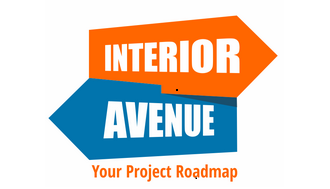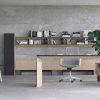Why your Office needs Pivot Spaces
For organizations, the COVID-19 pandemic has really brought the realization that today’s offices are about far more than a desk to work from. To create just a functional workspace has become a distant goal, as companies focus on making the workspace clean and risk-free rather than ideal to work with.
With physical distancing measures and a focus on improving the employee experience in mind, Pivot Spaces – or multi-functional areas of the office – are a key feature of Tomorrow’s Workplace.
Scottsdale, AZ
Project Roadmap

JLL research shows that 58 percent of employees miss the office – a figure that’s even higher among millennials. For many, it’s down to human interaction as well as being in a professional work environment which is why Pivot Spaces are so important. These are spaces available for everybody – open and enclosed meeting rooms, conference rooms and other areas – allow for more engaging and collaborative company culture. Designed well, these pivot spaces can help to make the office somewhere people want to be.
Introducing Pivot Spaces
Creating highly functional areas of the office for maximized use is what pivot spaces are about. Pivot spaces aren’t exactly new, but it has completely revolutionized the way we look at office spaces. Adaptable and tech-enabled, they’re the spaces where teams gather for brainstorming, where clients come in to discuss business, and where colleagues can have a quick chat in comfort.
There is no single way to create a pivot space. It should be designed according to the needs of the teams and the organizational culture. They might include semi-private pods, screens for presentations, larger tables for meetings, or quiet spots for focus work. Modular furniture is the right choice so that companies can easily redesign the spaces to suit their changing needs.
While it has been part of offices, it presents a fresh way of reconfiguring workspaces for the next version of the office. We need to consider a few important points while creating an inviting and effective pivot space.
Tempe, AZ
Project Roadmap

Multifunctional
Large rooms can be reconfigured and used in different ways. Instead of just putting series of tables and chairs, combine those tables with private booths that get into a more intimate setting, then it can start to support smaller group meetings that don’t necessarily need a conference room.
Flexibility
Encourage collaboration with furniture that can be easily moved and can serve a variety of functions. The more ways a single space can be used, the more often it will be used.
Queen Creek, AZ
Project Roadmap

Tools and technology
Consider technology needs, including power outlets, data access, collaboration tools, and AV equipment. Spaces that lack this equipment may be underutilized, or not utilized at all, because these tools are essential to the completion of many tasks.
Why Pivot Spaces?
Why should we incorporate pivot spaces into the office now?
When there is an absolute need to return to the physical office, it is necessary to make adjustments, consider pivot spaces, and be extra compliant with the guidelines for safety. Also, Pivot spaces make use of every part of the office in the very best way possible so that no space is left idle and untouched. There is enough room for everyone, and every space is used effectively.
Mesa, AZ
Project Roadmap

Promote Health and safety
Pivot spaces can be used to distribute staff around the office to maintain physical distancing and adapt accordingly as workplace guidelines change. Conference rooms will not be solely for meetings, lunchrooms can double as mini-huddle areas, and booths can be set up for working lone wolves or intimate brainstorming sessions.
Support client interactions
Pivot spaces can be adaptable to support interaction with clients in digital presentations and face-to-face negotiations. Instead of meeting rooms, a library or fireside room, for example, could be used for smaller client meetings. The spaces should be inviting and appealing, yet still professional to create a positive experience.
Gilbert, AZ
Project Roadmap

Better airflow and quality
Because pivot spaces are all about large areas and open spaces that provide plenty of room for movement and versatile seating arrangements, they aid to improve indoor air quality, which is what is lacking in most traditional offices where airflow is poor and restricted.
A Sense of community
With the use of pivot spaces, employees can get back on the grind together with their colleagues and enjoy exchanging ideas once more, while still keeping track of social distance. Pivot spaces offer a lot of room for flexibility in terms of furniture displays and location.
Mesa, AZ
Project Roadmap

Technology and connectivity
As offices get smarter, technology is getting more integrated across all types of pivot spaces. These spaces will utilize technology to help facilitate a contactless workplace, ensuring hygiene, and connecting all remote workers.
Branding
A pivot space is great to showcase brand values and culture. Visitors get a better feel for a company’s vision and brand when they see an open, collaborative workplace, while the right working environment can help employees feel part of something greater.
Chandler, AZ
Project Roadmap

How can you implement Pivot Spaces for your Workplace?
In the long-term, Pivot Spaces will be the reason why people enjoy coming into the office. These are the spaces where people can work according to their own needs and preferences and interact with the people around them to feel part of a community.
When designing a pivot workspace, it’s important to think about the diversity of employees and provide a variety of spaces for work methods and preferences. No one size can fit all.
Tempe, AZ
Project Roadmap







Leave a reply